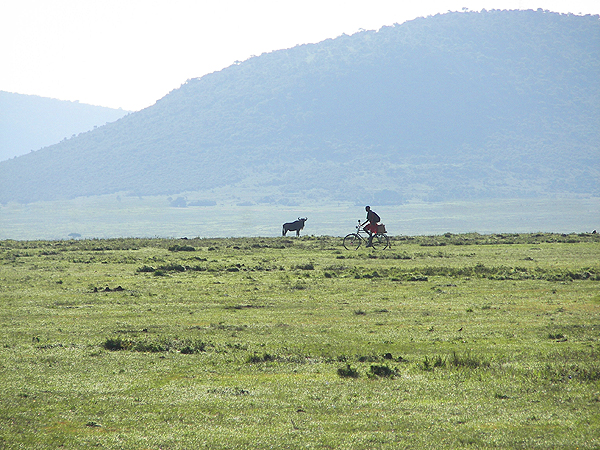
No, we aren’t quite as lucky as we thought. Science often does that to our ego: A rash of exciting new evolutionary studies has put the kibosh on the notion that we’re all descended from a single small group of Africans who left Africa 60-75,000 years ago.
Well, what d’ya know. It was fun for a while thinking we survived by the skin of our skin, and anyway we’ve now got something that will convince Mike Pence of evolution, right?
New science has determined there are at least two separate sets of early man genes in current human populations, not just one. So there were at least two separate groups that migrated out of Africa, and those migrations might be separated by as much as 50,000 years.
No scientist doubts that homo sapiens arose in Africa then migrated out across the rest of the world, displacing, interbreeding, conquering or eating up all the other early hominins that might have been out there.
Well, that’s the more dramatic view. In any case, we do carry about 5% Neanderthal genes in us, and Neanderthal disappeared about 20-30,000 years ago.
Until a Danish scientist carefully examined the DNA of Australian aborigines it was generally thought that only the final of undoubtedly multiple migrations of homo sapiens out of Africa was responsible for populating the world as we know it, today.
In other words, any previous migrations died out – went extinct. That final successful migration occurred 60-75,000 years ago and was from a very small group of people, perhaps as few as hundreds.
Geneticist Eske Willerslev took a single hair from an aboriginal person in Australia and masterfully continued the story. His studies show that around 58,000 years ago a group of people living in Europe split off and headed east, perhaps further interbreeding with another early hominin called a Denisovan. Persons with aboriginal descent in Australia and New Guinea carry these very specific genes that the rest of us don’t.
Willerslev’s study was followed by Luca Pagani with further analysis suggesting a much earlier homo sapiens migration of 120,000 years ago which accounts for as much as 2% of the Papuan genome, today. And that study was almost immediately confirmed by a similar Harvard study.
Put this all together and it suggests that at least two waves of migrating African homo sapiens, and maybe three or more, survived and prospered.
Perhaps the single most interesting conclusion from all this exciting new science is that homo sapiens, unlike the Neanderthals or Denisovans, had more wanderlust and/or skills for surviving long migrations. Clearly this explains why we tolerate such small airline seats.
These composite studies also end the conflict that arose with several early human discoveries in China that at the time seemed too old (80-20,000 years ago) to fit into the previous notion that only a single migration out of Africa created us.
Yes, Mr. Pence, it’s true that science sometimes undoes itself, and I think that’s darn exciting! Unlike the dimensions of The Ark, eh?
I guess it only goes to show that we must not become so sure of our/or their theories….new data, and voila, new understanding….so humility seems to be in order, and of course, that does not apply to Trump. Two different migrations? And probably we’ll be hearing about more migrations than that after more and more DNA research. Thanks for the info.